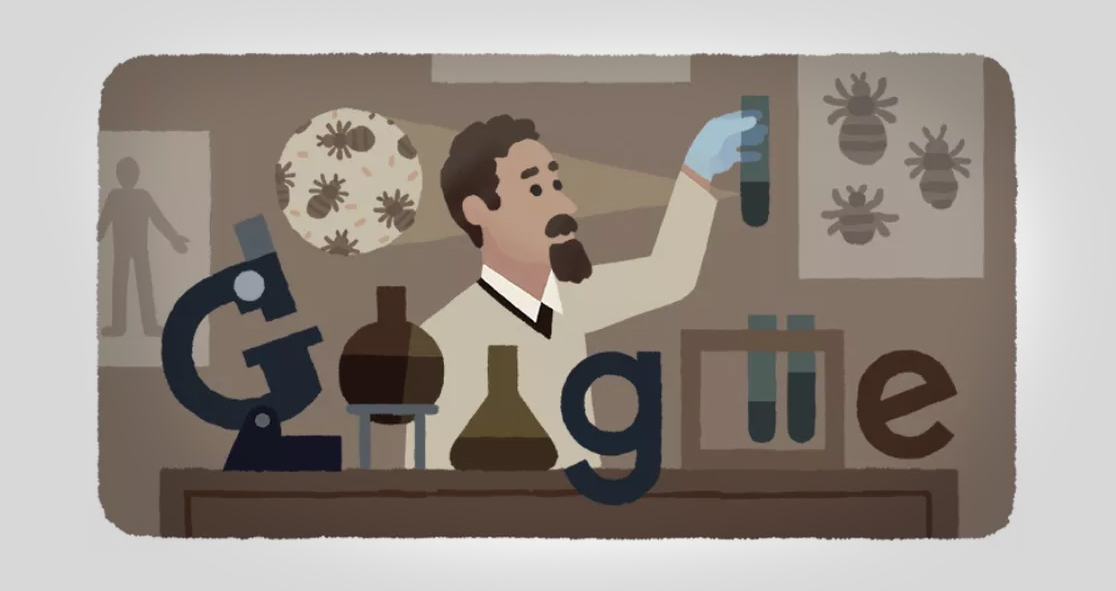Today, Google dedicated its Doodle to honor the 138th birthday of Dr. Rudolf Weigl, a Polish biologist and physician who is known for developing the first effective vaccine against epidemic typhus.
His vaccine invention during World War II saved countless Jewish lives from Nazis. Typhus was responsible for millions of deaths at the time.
Apart from saving lives by inventing the Typhus vaccine, Dr. Weigl provided shelter for Jews at risk of execution during the Holocaust.
Born in 1883 in the modern-day Czech Republic, Dr. Weigl graduated with a degree in biological sciences from Poland’s Lwów University in 1907. He earned doctoral degrees in zoology, comparative anatomy, and histology.
During World War I, typhus ravaged Eastern Europe and Dr. Weigl was determined to stop it. He discovered that the bacteria causing typhus spread through lice. He then grew infected lice in his lab and harvested their stomachs to be mashed into a vaccine, according to CNET.
Dr. Weigl began large-scale testing of the vaccine in 1933. And during this time, he got the disease himself but recovered.
He was nominated twice for the Nobel Prize in Medicine in 1942 and 1948. For his contributions, he was named a Righteous Among the Nations in 2003.
Following the border changes in the aftermath of the war, Dr. Weigl moved to Kraków in southern Poland.
He was appointed Chair of the General Microbiology Institute at the Jagiellonian University, Poland, and later Chair of Biology at the Medical Faculty in Poznań.
Dr. Weigl retired in 1951, but the production of his vaccine continued in Kraków for a few years.
For his research and work with typhus at Lwów University, Dr. Weigl’s Institute was created within the department of Typhus Research. He died on August 11, 1957, in the Polish mountain resort of Zakopane. He was 73 years old.























